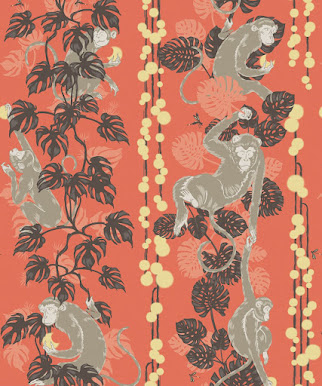Best Way to Remove and Hang New Bunny Wallpaper
Wallpaper removal does not have to be a time-consuming and unpleasant task. Yes, it will take some time and elbow grease, but if you follow these steps, you will be able to remove the wallpaper and glue altogether, and then you can paint your walls or hang new bunny wallpaper.
You'll need to determine what kind of wallpaper you have first. There are two basic types. Most recent wallpapers are strippable; however, older backgrounds will necessitate more effort. We will teach you how to get rid of both of them.
Strippable Wallpaper
Tools needed: Hot water with detergent, a sponge, rubber gloves, and a painter's spatula are all required tools.
To
test if your wallpaper can be stripped:
- Start in a corner and see if it
peels.
- Using your sponge and detergent
solution, loosen stubborn areas with your spatula and soften the glue.
- Once all of the wallpaper has
been removed, clean the wall sufficiently. It may be made more accessible
with a gallon of boiling water and two cups of vinegar.
Fabric softener, other home cleansers, and dish detergent solutions might also be used. You can try several things to determine what works best for you. You can also look for Bunny Toile Wallpaper in Grey from the A Perfect World Collection by Y.
Non-Strippable Wallpaper
Tool needed: A perforation instrument, such as a utility knife or a paper scorer, a wallpaper removal bottle, hot water, painter's spatula, broad blade, and a sprayer or paint roller are all required tools.
Make sure any neighboring furniture and rugs are covered with a tarp before beginning. It is a tip you don't want to overlook since wallpaper removal is a dirty job. Most wallpapers include a water repellent coating to protect them from water. As a result, you'll need to slice the top layer with a utility knife or a paper scorer to remove the adhesive.
Score the area to be eliminated in a crisscross pattern. If you cut too deeply, your wall may be damaged. Follow the manufacturer's directions for mixing the wallpaper remover. Moisten and score areas with a sprayer or paint roller, then wait 15 to 30 minutes for the liquid wallpaper remover to sink in. Scrape off pieces of wallpaper from the wall with a broad knife or painter's spatula.
Rinse the area
After removing all of the wallpaper, give the area a good rinse with a strong detergent and hot water. The drywall will almost certainly require some modest repairs, and you may need to caulk around the windows, trim, and ceiling. After the sheetrock has dried thoroughly, sand the walls to smooth up any rough places. When you're finished, make sure to dust the walls.
Steamer
If you don't want to employ the methods above, a steamer might be used instead. You may hire one from most rental companies or paint shops. If you're going to use a steamer, make sure you work on tiny pieces at a time. Once the wallpaper has been unfastened, remove it with your wide knife or painter's spatula, working your way up. You'll need to clean the walls mentioned above once the paper has been removed.
Final thoughts
Your walls are ready for painting or using bunny wallpaper after drying. Make sure you're using a primer suited for the job. Because wallpaper is applied on smooth walls, this is an excellent time to consider texture if you want to paint the walls.
Our Social Media Handle:
Instagram: https://www.instagram.com/burkedecor/
Facebook: https://www.facebook.com/burkedecor/
Pinterest: https://www.pinterest.com/burkedecor/
Check out our 5 star google reviews here:




Comments
Post a Comment